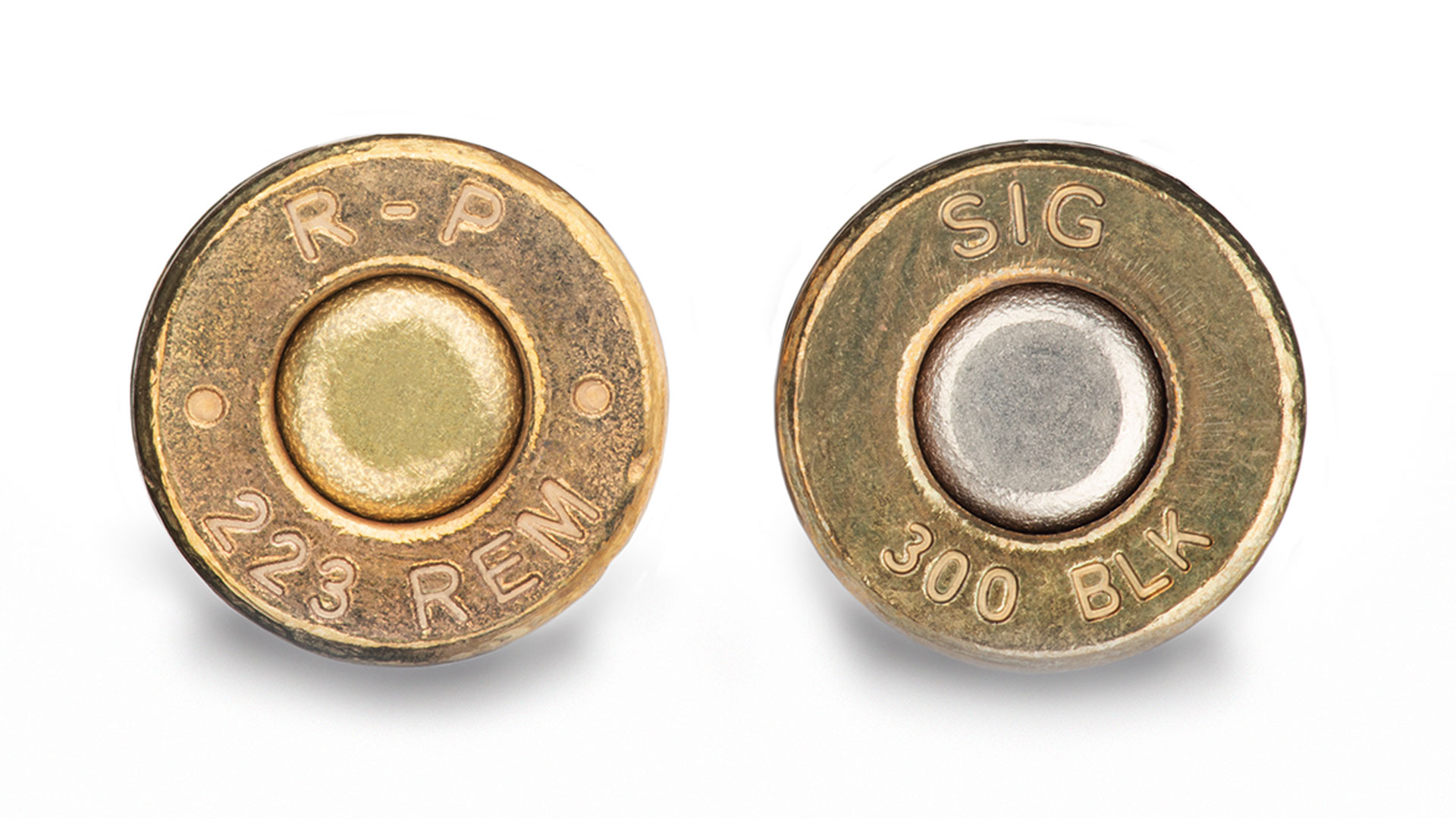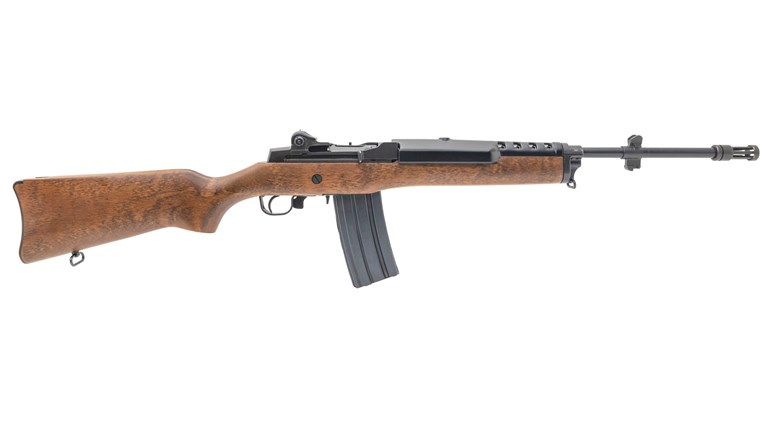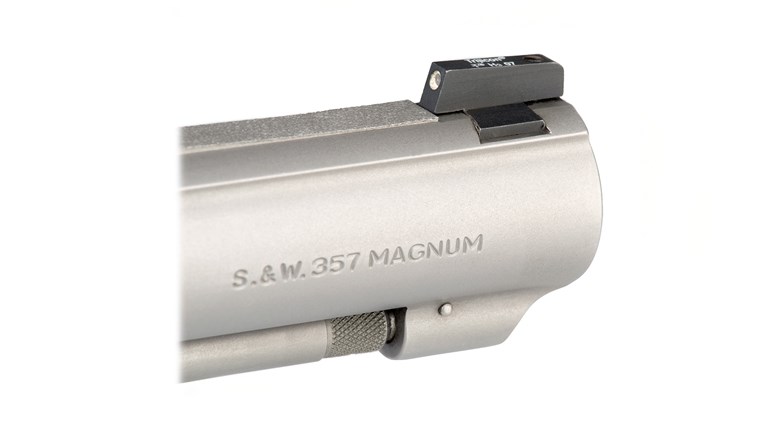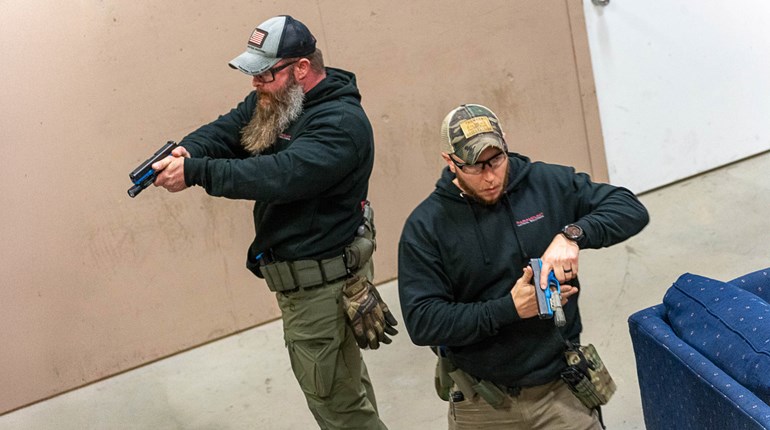
My brother-in-law and I took our collective AR-15 rifles to the local sand pit last Saturday to practice shooting drills and basic marksmanship. Included were several 5.56 NATO rifles in both standard and tricked-out versions, as well as one suppressed .300 BLK.
Although we knew better and made sure (we thought) that the ammunition for the respective guns was divvied to each gun, it happened.
I picked up a previously loaded magazine at our ammunition-supply point and was practicing snaps at 25 yards with my stock SIG Sauer M400 equipped with a Romeo4T red-dot sight by the same manufacturer. At about the halfway point through the magazine, there was a flash with a lot of smoke and the gun stopped working. The magazine was blown out of the magazine well and the bolt was locked to the rear. I was sick, since the M400 is one of my favorite rifles.
At the scene, we found a mangled piece of brass resembling the shorter .300 BLK case, which we suspected was the likely culprit.
Further inspection of the rifle and the magazine showed 10 remaining rounds, all M193 ball rounds still in the magazine. Other than the discoloration left by the smoke and pressure release, the magazine and the ammunition appeared serviceable.
The rifle itself appeared to be undamaged, and the tip of the bullet from the fired cartridge was found slightly protruding from the muzzle.
Our curiosity got the best of us as to why and how this happened, so we decided to scrub the rest of the day and go home looking for answers.
Back on the cleaning bench, we fieldstripped the rifle with an interest in finding out how bad the damage was. Initially, we detected no physical damage to any part of the rifle. With this finding, we decided to thoroughly clean and further inspect the rifle’s parts for bulges, cracks or other damage that may have occurred. Other than removing the protruding bullet from the muzzle with a solid-steel cleaning rod, we found no observable concerns with the rifle.
We lubricated the rifle, reassembled it and performed multiple function checks without an issue. The red-dot sight still co-witnessed with the irons. We could not believe it!
Do you think the gun is safe to shoot, or do you recommend that we take more extensive steps to verify its usability before we go live with it again?
Jimmy and Joe — From Down South
That is quite a story, but not as unusual as you would think. I have seen bulk 5.56 NATO ammo from reputable manufacturers with the presence of .300 BLK ammunition in a container that was supposed to be 5.56 NATO only.
When consolidating partial boxes or lots of ammunition after a range shoot, it is easy to overlook cartridges that look so similar to one another.
Another thing that many of us are guilty of is firing range-discarded ammunition. It is extremely tempting to pick up a freshly dropped or ejected round, wipe it off and put it in our pocket for later use.
In every one of these cases, and most likely in your case, a quick visual inspection of each round being inserted into the magazines would prevent introducing the wrong ammunition into the rifle being used.
Also, just looking at the bullets (projectiles) themselves would be indicator enough to avert such a mishap from occurring. There is an easily recognizable difference between a small-caliber bullet and a much larger .30-caliber projectile by sheer size alone.
Regarding shooting the gun again, without looking at it, I can only offer a suggestion, which would likely be the same even if I could see it because of the lack of test equipment in my current inventory.
Because of the excess pressure to which the gun was subjected, I would not be surprised if there was metal fatigue in multiple areas of the gun’s components that—while not being immediately obvious to the discriminating eye—could possibly fail in the future.
It would take a Magnetic Particle Inspection for the ferrous metal parts or a Dye Penetrant Inspection for the aluminum parts to reveal deficiencies in the metal’s surface. There are other methods, but these are prevalent within the firearm industry.
Because of this, I would contact SIG Sauer’s customer service department and arrange to have the gun sent in for a service evaluation. It has all the appropriate test equipment and also a good reputation in the treatment of its customers. With luck, this whole process will be a less costly education than it could have been.





































